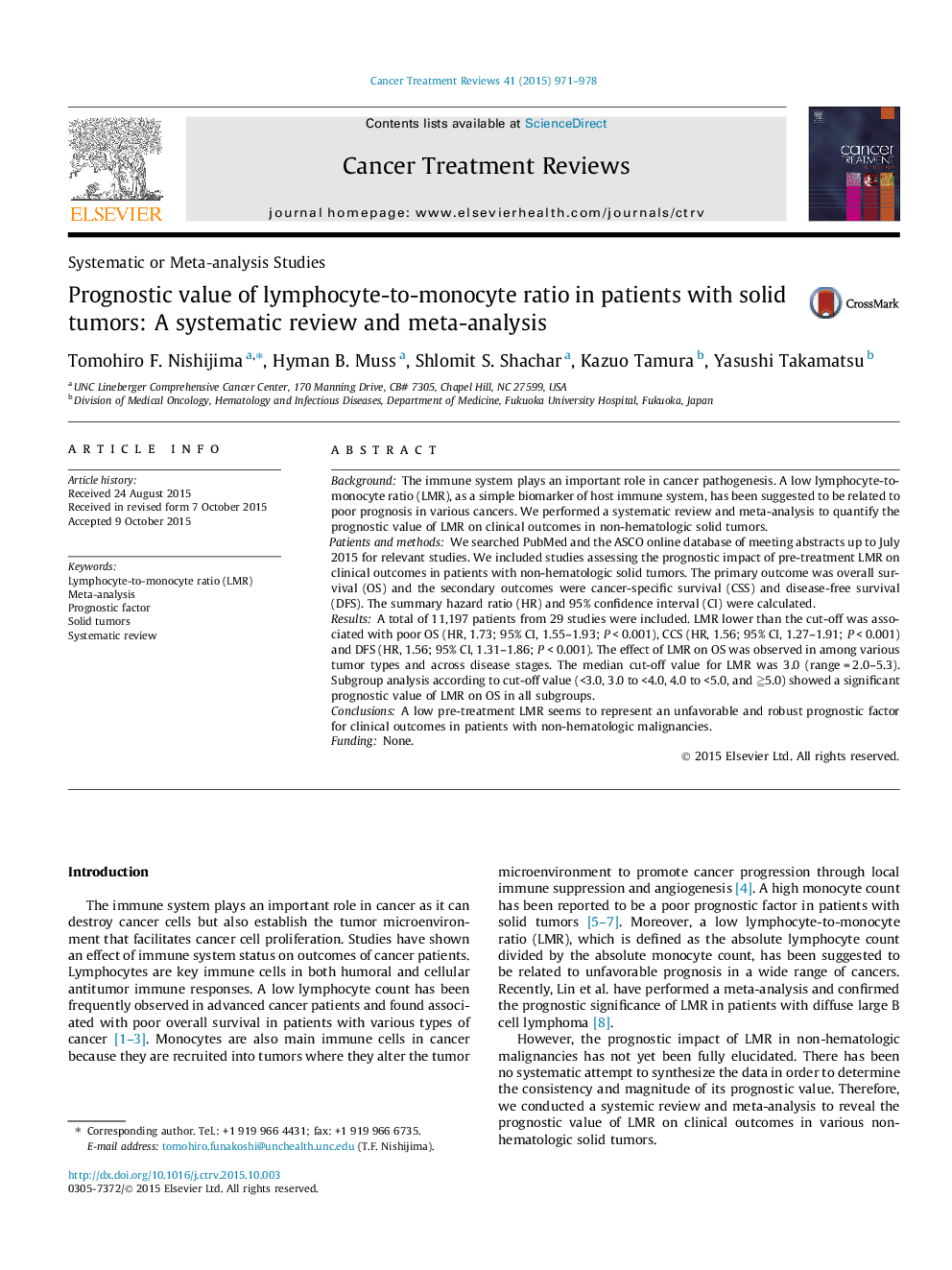| کد مقاله | کد نشریه | سال انتشار | مقاله انگلیسی | نسخه تمام متن |
|---|---|---|---|---|
| 6190419 | 1257367 | 2015 | 8 صفحه PDF | دانلود رایگان |
- This meta-analysis quantified the prognostic value of LMR in solid tumors.
- LMR lower than the cut-off was associated with poor OS (HR, 1.73; 95% CI, 1.55-1.93).
- The effect of LMR on OS was observed in among various tumors and disease stages.
- A low LMR was an unfavorable prognostic factor for CSS (HR, 1.56) and DFS (HR, 1.56).
BackgroundThe immune system plays an important role in cancer pathogenesis. A low lymphocyte-to-monocyte ratio (LMR), as a simple biomarker of host immune system, has been suggested to be related to poor prognosis in various cancers. We performed a systematic review and meta-analysis to quantify the prognostic value of LMR on clinical outcomes in non-hematologic solid tumors.Patients and methodsWe searched PubMed and the ASCO online database of meeting abstracts up to July 2015 for relevant studies. We included studies assessing the prognostic impact of pre-treatment LMR on clinical outcomes in patients with non-hematologic solid tumors. The primary outcome was overall survival (OS) and the secondary outcomes were cancer-specific survival (CSS) and disease-free survival (DFS). The summary hazard ratio (HR) and 95% confidence interval (CI) were calculated.ResultsA total of 11,197 patients from 29 studies were included. LMR lower than the cut-off was associated with poor OS (HR, 1.73; 95% CI, 1.55-1.93; P < 0.001), CCS (HR, 1.56; 95% CI, 1.27-1.91; P < 0.001) and DFS (HR, 1.56; 95% CI, 1.31-1.86; P < 0.001). The effect of LMR on OS was observed in among various tumor types and across disease stages. The median cut-off value for LMR was 3.0 (range = 2.0-5.3). Subgroup analysis according to cut-off value (<3.0, 3.0 to <4.0, 4.0 to <5.0, and â§5.0) showed a significant prognostic value of LMR on OS in all subgroups.ConclusionsA low pre-treatment LMR seems to represent an unfavorable and robust prognostic factor for clinical outcomes in patients with non-hematologic malignancies.FundingNone.
Journal: Cancer Treatment Reviews - Volume 41, Issue 10, December 2015, Pages 971-978
